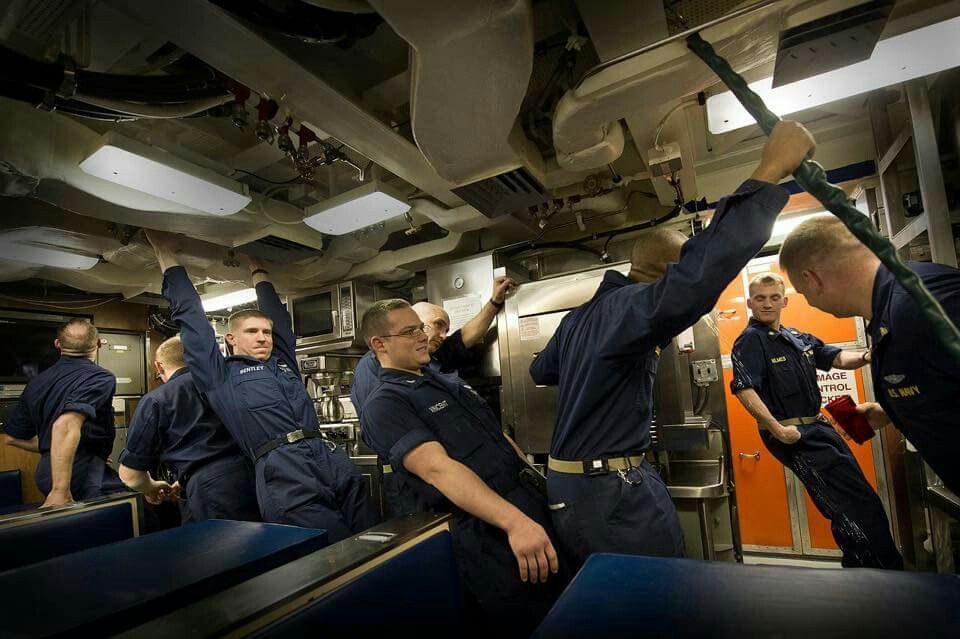
Angles and Dangles: Stories of Silent Service
Let’s start with the obvious question: what the hell is an "Angle and Dangle" and why does it sound like something the flight deck crash and smash team would tease the new guy about? Relax, shipmate, it’s not that kind of party.
"Angles and Dangles" is a sacred ritual in the Silent Service. It's when the submarine crew intentionally puts the boat through a rollercoaster of steep depth changes and turns before deployment to make sure nothing onboard goes flying, rolling, or clanking at the worst possible moment. If anything is loose, it will fall over and make noise—and on a submarine, noise is the enemy. Making noise can literally mean life or death. It's like shaking a vending machine to see what falls out—except the vending machine is a $2 billion war machine packed with torpedoes, classified equipment, and Sailors who just want their coffee to stay put.
And yes, submarine stealth is no joke. The entire game is silence. That’s why they call it the Silent Service. If your gear clanks, bangs, or squeaks—congrats, you just became a tracking beacon. Here’s a primer on why sound management is everything for undersea warfare.
Imagine you’re in your rack dreaming of liberty in Phuket, when suddenly the boat does a 30-degree down angle. You’re now levitating like a Hogwarts reject and your rack mate’s half-eaten Snickers just landed in your mouth. Welcome to the dangles. That "Snickers of Death" could just as easily have been a rogue wrench or a coffee pot slamming into the deck—not exactly what you want when you're trying to stay off the sonar.
Back in the diesel boat days of WWII, submarines like the USS Tang (the OG undersea badass) would use angles and dangles not just to secure gear, but to train the crew for rapid evasive maneuvers. The Tang had a kill record so long they practically had to invent new medals for her skipper, Richard O'Kane. Tragically, she was lost in combat when one of her own torpedoes malfunctioned and circled back. The loss of the Tang and most of her brave crew serves as a solemn reminder of the dangers faced by submariners in wartime. Remarkably, O'Kane survived and went on to be awarded the Medal of Honor for his valor.
Fast forward to the Cold War, and the stakes only got higher. Boats like the USS Parche and USS Halibut weren’t just patrolling—they were sneaking into Soviet territory, tapping undersea communication cables, and playing the world’s most dangerous game of hide-and-seek. Ever heard of Operation Ivy Bells? That’s the one where our subs were eavesdropping on Soviet military traffic through telephone lines on the ocean floor. Because why just sail around when you can also casually commit espionage at 800 feet below the surface?
And if you’re thinking these missions were all glamour and James Bond-level espionage—think again. Crews endured months underwater, zero sunlight, hot-racking, and the constant stress of being hunted. Here’s a reality check from the WWII era.
One wrong noise? Game over. That’s why the crew would do angles and dangles like their lives depended on it—because they absolutely did. Unsecured coffee mugs, loose tools, or that one guy who insists on bringing a harmonica onboard? Total liability. Silence isn’t golden. It’s life.
Even modern nuclear subs still hold to this tradition. Before deployment, they put the boat through these wild angles to make sure the crew is squared away and no rogue wrench is going to roll into the sonar room during silent running. No one wants to be "that guy" who broke the silence with a clatter heard all the way in Vladivostok.
Let’s be honest, no one wants to hear any unexpected noise echoing through the sonar suite when you’re running silent. To quote the great Sean Connery as Captain Ramius in The Hunt for Red October: "One ping, Vasili. One ping only." Because in the Silent Service, one clean sonar ping is a deliberate choice—everything else better be silence, or something’s gone very wrong. In fact, the sound of anything unplanned onboard can be enough to give a sonar tech a minor heart attack and a CO a major one.
And while we’re on the subject of sound, let’s appreciate how the smallest things matter. Even a dropped spoon has the potential to be detected. That’s why submarine crews are fanatical about securing gear. Angles and dangles aren’t optional—they’re vital.
So next time you hoist a mug of Old Salt’s Silent Service blend, think of the Sailors doing the underwater hokey-pokey at 20 knots. That rich, full-bodied roast with notes of dark chocolate and molasses is a tribute to those who rode the angles, survived the dangles, and still managed to keep the coffee hot and the silence holy. It's also a great way to support the Dolphin Scholarship Foundation, helping the families of Submariners get an education.
#SilentService #AnglesAndDangles #HoistAMug #SubmarineLife #MaritimeHeritage #GivingBack #DolphinScholarshipFund #VeteranOperated #DeathToDecaf #ColdWarSubmarines #WWIISubmarines #SubmarineEspionage #UnderseaWarfare


2 comments
Rode submarines for 20 years – 3 SSNs and one SSBN. Miss the days of angles and dangles! BTW, the Silent Service blend is good stuff!
I ran the Antenna Repair Shop on the sub tender USS Simon Lake for 2-1/2 years…
Taught me the smartest move I ever made in my naval career was NOT becoming a bubblehead!